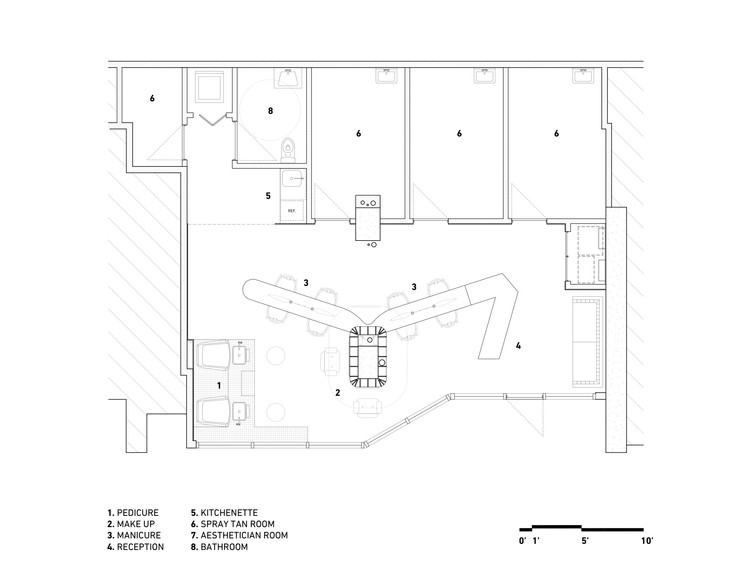Santral Istanbul Museum of Contemporary Arts Emre Arolat Architects + NSMH
2014-05-22 01:00
架构师提供的文本描述。几个世纪以来,黄金之角一直是伊斯坦布尔的中心和舞台,从19世纪末开始,它就失去了魅力,逐渐变得单调乏味,直到上世纪90年代被重新发现。在过去的15年里,由于许多新的项目,它再次吸引了这座城市。比尔基大学(Bilgi University)提出将西拉塔拉(Silahtarağ)发电厂改造为博物馆、娱乐和教育中心;这个典型的现代工业设施建于19世纪10年代至20世纪50年代,占地10.7万平方米,形成了阿利贝克河(Alibek Y)和卡·卡塞恩河(KağıChane)之间的一种半岛,就在黄金之角的尽头。
Text description provided by the architects. The Golden Horn has been Istanbul’s center and stage for centuries before it lost its glamour starting from the end of the 19th century, and gradually became drabber until the 1990s when it was rediscovered, and for the last 15 years it has started captivating the city once again thanks to many new projects. Bilgi University offered to carry out the renovation and transformation of the Silahtarağa Power Plant into a museum and recreation and educational center; this typical modern industrial installation constructed between the 1910s and 1950s occupies a 107,000-m2 lot forming a sort of peninsula between the Alibeyköy and Kağıthane creeks right where the Golden Horn ends.
© Emre Arolat Architects
埃姆雷·阿罗兰建筑师


在项目的初期阶段,目的是建立一个池,其中包括设施的所有可进入的阶层,以便开辟合理的养护和翻新渠道。在这一背景下进行的研究取得了以下具体成果:1910年拟订的第一个项目的痕迹仍有待观察,但最初作出的紧张决定在40年中形成的大量工业结构中得到放松;通过务实的行动进行了正式的违反;虽然建筑群体的风格特征和建筑体系可以概括为机房、锅炉房和职工房,但这两套建筑在建造时都具有工业化世界的典型特征。随着更多的时间花在现场上,随着我们调查的深入,这些投入,再加上自发形成的地域性,成为了关于更新和保护的设计决策的宝贵线索。
At the initial stage of the project the aim was to establish a pool which would include all accessible strata of the installation in order to open up plausible channels of conservation and renovation. Research carried out within this context gave tangible results such as follows: the traces of the first project prepared in the 1910s are still to be seen, yet the tight decisions taken initially were loosened among the mass of industrial structures that had formed over the course of 40 years; formal violations had been made via pragmatic moves; though the stylistic characters and construction systems of the building groups, which could be generalized as the engine room, the boiler room and staff housing, were decisively dissociated from one another, both sets of buildings had the same typical characteristics of the industrialized world at the time they were built. As more time was spent on the site and as we went deeper in our surveys, these inputs, combined with the sense of place that developed spontaneously, emerged as valuable clues as to the design decisions for renovation and conservation.
Floor Plan


一种精心确立的翻修方式,将考虑到目前的情况和目标,并在每一次具体的相遇中重新考虑并给予应有的考虑,已被接受为这一相当广泛的项目的不同组成部分的共同标准。
A carefully-established renovation style, which would take into account the situation and the object at hand, and which at each specific encounter would reconsider them and give them their due, was accepted as the common denominator for the different components of this rather extensive project.






















































































Architects Emre Arolat Architects, NSMH
Location Istanbul, Turkey
Category Adaptive Reuse
Design Team Kerem Piker, Natali Tombak, Gani Turunç, Sezer Bahtiyar, Ertuğrul Morçöl, Orhun Ülgen, Esin Erez, Murat Yavuzoğlu, Serdar Tercan, Ufuk Berberoğlu, Gözde Sazak, Gülseren Gerede Tecim, Hale Ikizler
Area 6800.0 sqm
Project Year 2007
Photographs Emre Arolat Architects
























